Occupational Environment Monitoring at Wind Power Factory
99,000 ₫
Note: The above price is calculated for one sample; the price may fluctuate depending on the area of the environment to be monitored and market movements. For more accurate price support, please refer to the price list or contact our consulting staff directly.
Environmental monitoring of a wind power factory is a session of collecting, analyzing, and evaluating factors at the workplace that may be harmful to workers’ health.
Table of Contents
Toggle1. Overview of Wind Power Factories
a. What is a wind power factory?
A wind power factory is a facility that generates electricity using wind as the primary energy source, also called wind energy. Wind power factories typically consist of one or more clusters of wind turbines installed on tall towers to capture wind and convert wind energy into electricity.
Wind blades are designed to rotate according to changes in wind direction, generating rotational motion for the turbine shaft. This rotation drives a transmission system, usually a gearbox or a direct drive, to generate electrical power.
The electricity produced by a wind power factory depends on several factors, including the size of the turbines, wind speed, turbine efficiency, and operating time. Wind power factories are often built in locations with strong and stable winds, such as open plains, offshore areas, or mountainous regions.
A wind power factory is a renewable energy source and does not emit carbon. It is considered a clean and sustainable method of electricity production, contributing to environmental pollution reduction and lowering greenhouse gas emissions in the energy industry.

b. Production stages in a wind power factory
The production stages in a wind power factory include:
- Site Survey and Selection: Before constructing a wind power factory, investors conduct geological and meteorological surveys to identify suitable locations for turbine installation. This includes assessing wind speed, terrain, ground stability, and other factors.
- Wind Turbine System Design: After selecting the site, engineers and designers create detailed plans for the wind turbine system. This includes choosing the appropriate size and type of turbines, support structures, and transmission systems.
- Infrastructure Construction: The construction process involves building foundations, cable routing systems, lubrication pipelines, internal roads, and other facilities to support the operation of the wind power factory.
- Wind Turbine Installation: Wind turbines are installed on tall towers to take advantage of wind. This includes installing blades, gearboxes, and other turbine components.
- Electrical System Connection: Electrical lines from turbines are connected to the power grid to convert wind energy into electricity. Electrical works, including transformers and circuit connections, are carried out to ensure safe and efficient power transmission.
- Testing and Operation: After construction is completed, tests are conducted to ensure proper and safe system operation. The wind power factory is then operated and maintained according to schedule, including inspections, maintenance, and repairs to ensure continuous and efficient operation.

c. Machinery used in wind power factories
In a wind power factory, several key machines are used to generate and operate the wind power system. Common machinery includes:
- Wind Turbine: The main machine in a wind power factory, converting wind energy into electricity. A wind turbine includes major components such as rotor blades, gearbox, generator, shaft, and control system.
- Gearbox: An essential turbine component that converts rotor speed to generator speed. It improves efficiency and adjusts rotational speed according to wind speed.
- Generator: Converts mechanical energy from rotor blades and turbine shaft into electrical energy, producing alternating current for the power grid.
- Control System: Monitors and adjusts turbine operations, ensuring efficient and safe performance. Includes sensors, controllers, and software.
- Drive and Transmission System: Components such as shafts, gears, couplings, and bearings transfer rotational motion from the blades to the turbine and generator.
- Tower: A tall supporting structure that holds the turbine at an optimal height for wind capture. Typically made of steel or concrete and may be simple or high towers.

d. Occupational diseases for workers in wind power factories
Workers in wind power factories may develop certain occupational diseases in the workplace, including:
- Ear, Nose, and Throat Disorders: Exposure to high noise levels from operating machinery, especially turbine noise, may cause hearing damage.
- Musculoskeletal Disorders: Construction, installation, and maintenance work can lead to injuries or musculoskeletal disorders such as fractures, wounds, back pain, neck pain, and heavy lifting injuries.
- Respiratory Disorders: Working at heights and exposure to dust, chemicals, or toxic gases can lead to respiratory problems such as pneumonia, asthma, and other airway issues.
- Radiation Exposure: In nuclear power facilities (if applicable), workers may be exposed to X-rays and gamma rays, causing diseases such as cancer, bone disease, cardiovascular disease, and blood disorders.
To ensure worker safety, protective measures and occupational safety practices should be applied, including personal protective equipment, safety training, regular health check-ups, and compliance with workplace environment regulations related to wind energy.

e. Wind power factories in Vietnam
Vietnam is rapidly developing its wind power sector with many wind power factories nationwide. Notable examples include:
- Bac Lieu Wind Power Factory: Located in Bac Lieu province, one of the largest wind power projects in Vietnam. With a total capacity of 99 MW, it uses 62 wind turbines to generate electricity.
- Mui Dinh Wind Power Factory: Located in Ninh Thuan province, with a capacity of 37.6 MW using 16 wind turbines.
- Phu Quy Wind Power Factory: Located on Phu Quy island, Binh Thuan province, with a capacity of 27 MW using 9 turbines.
- Ca Mau Wind Power Factory: Located in Ca Mau province, with a total capacity of 99 MW using 62 turbines.
- Bac Lien Wind Power Factory: Located in Bac Ninh province, with a capacity of 99 MW using 45 turbines.
These are just examples, with many other projects under development across the country.
2. Overview of Occupational Environment Monitoring Services
a. What is occupational environment monitoring in a wind power factory?
Occupational environment monitoring (or workplace environmental measurement) in a wind power factory involves collecting, evaluating, and analyzing environmental factors at the workplace to take timely measures, minimize health hazards to workers, and prevent occupational diseases. Monitoring is mandatory for all wind power factories.
Occupational environment monitoring plays a crucial role in protecting and enhancing workers’ health because labor is the main resource and directly contributes to a company’s profit. Workers frequently exposed to risks or occupational hazards beyond permissible limits may suffer health effects and occupational diseases.
REGISTER OCCUPATIONAL ENVIRONMENT MONITORING SERVICE
b. Nam Viet’s occupational environment monitoring program
Nam Viet’s program is developed by engineers specializing in labor safety and environmental protection. It ensures worker health and safety using modern measurement methods to monitor air, water, microclimate, physical, and dust factors in the workplace. This program is essential for maintaining a safe working environment and protecting workers’ health.
Additionally, the program plays an important role in researching and developing new solutions to improve workplace environmental quality. With a dedicated and professional monitoring team, Nam Viet’s exclusive program is a breakthrough in occupational safety and environmental management in Vietnam.

c. Standardization in occupational environment measurement procedures
Standardization ensures accurate and reliable results. The program follows recognized standards from Ho Chi Minh City Department of Health. Results are reliable for workplace evaluation and decision-making.
Standard procedures ensure measurements are performed by qualified monitoring experts with years of experience, providing managers and specialists trustworthy results for accurate decisions in occupational health and environmental protection.
d. Reporting occupational environment monitoring results in wind power factories
Monitoring results are compiled according to Form 04, Appendix III of Decree 44/2016/ND-CP, prepared in two copies: one for the factory and one for the monitoring organization.
Results are kept indefinitely according to law.

e. Monitoring frequency according to law
According to Clause 2, Article 18 of the Law on Occupational Safety and Hygiene 84/2015/QH13, employers must monitor harmful factors at least **once a year**.
f. Deadline for submitting monitoring reports according to law
Reports must be submitted before December 31 each year to the local Department of Health. When production processes change or upgrades create new hazards, factories must update their occupational hygiene records.
g. Penalties for violating occupational environment monitoring regulations
According to Article 27 of Decree 12/2022/ND-CP dated January 17, 2022:
- Clause 2: Fine from 2,000,000 – 5,000,000 VND for employers who fail to publicly inform workers at the monitored site immediately after receiving monitoring results.
- Clause 3: Fine from 20,000,000 – 40,000,000 VND for employers who fail to conduct occupational environment monitoring as required by law.
- Clause 4: Fine from 40,000,000 – 60,000,000 VND for employers colluding with monitoring organizations to falsify monitoring results, without reaching criminal liability.
3. Harmful Environmental Factors for Workers in Wind Power Factories
In the working environment of a wind power factory, workers may be exposed to several harmful environmental factors. The following are some potential environmental factors that can affect workers’ health:
- Noise: Wind turbines and other equipment in wind power factories generate significant noise. Long-term exposure to noise can negatively impact hearing and cause health problems such as hearing loss, stress, and sleep disturbances.
- Temperature fluctuations: Working in a wind power factory may require being in environments with high or sudden changes in temperature. This can cause fatigue, stress, and health issues if not carefully managed.
- Dust and liquids: During construction, maintenance, and operation of wind power factories, workers may come into contact with dust and liquids from building materials, lubricants, and other chemicals. Long-term exposure without safety measures can cause health problems such as skin irritation, respiratory issues, and other consequences.
- Height: During the installation and maintenance of wind turbine blades, workers may have to work at heights, with a risk of falling. Safety measures must be strictly followed, as failure to do so can result in accidents and serious injuries.
- Electromagnetic energy: During the operation of a wind power factory, workers may come into contact with electrical equipment and high currents. Failure to comply with safety regulations can cause electrical hazards and injuries.
4. Measures to Improve the Working Environment in Wind Power Factories
Improving the working environment in wind power factories is crucial to protect the health and safety of workers. The following measures can be implemented to enhance the working conditions:
- Noise management: Ensure that equipment is operated and maintained properly to reduce noise. Use protective gear such as noise-canceling headphones to safeguard workers’ hearing.
- Height safety management: Apply safety measures for working at heights, including harnesses, scaffolding systems, and personal protective equipment.
- Training and guidance: Provide training and instructions for workers on occupational safety, safe work procedures, and proper use of personal protective equipment.
- Air quality management: Ensure good ventilation in work areas and control air pollution, dust, and chemicals to reduce exposure and health risks for workers.
- Waste management: Safely and properly handle waste, ensuring that waste from wind power factories is disposed of in a way that does not negatively impact the working environment.
- Periodic health checks: Organize regular health examinations for workers, monitor work-related health issues, and implement preventive and treatment measures as necessary.
- Create a positive work environment: Encourage a positive work environment, including promoting social interaction, ensuring fairness and respect, and raising awareness of health and safety.
- Regularly conduct occupational environment monitoring in factories, collect and analyze harmful factors for workers, and adjust to reduce hazards to prevent occupational diseases.
5. Benefits of Regular Wind Power Factory Monitoring
An Toan Nam Viet provides businesses with outstanding benefits when using occupational environment monitoring services according to Decree 44/2016/NĐ – CP on managing and controlling harmful factors in the working environment affecting employees.
- Businesses can proactively control harmful factors in workshops or factories.
- Receive advice and recommendations for measures to minimize harmful factors and improve workplace environmental quality.
- Indirectly protect human resources, the key factor in business development.
- Reduce the impact of occupational diseases on health, minimizing future treatment costs.
- Improved worker health leads to better product quality and consistent output.
- Comply with labor safety regulations, avoiding legal risks.
- Enhance credibility and professionalism in all aspects, thereby elevating the company’s brand.
Nam Viet’s occupational environment monitoring service is a solution to minimize the effects of occupational diseases and contribute to a clean and quality working environment.

REGISTER FOR OCCUPATIONAL ENVIRONMENT MONITORING SERVICE
6. National Occupational Environment Monitoring Center
Nam Viet’s Occupational Environment Monitoring Center is a professional unit for monitoring and measuring occupational environment quality throughout all provinces in Vietnam. With an experienced team of monitoring specialists, the center uses modern measurement devices to ensure accuracy and reliability.
In addition to monitoring services, the center assists clients with planning, handling, and tracking occupational environment issues. With the motto “customer-centered,” the center prioritizes client satisfaction, meets all client needs, and commits to providing the best solutions for businesses.
REGISTER FOR OCCUPATIONAL ENVIRONMENT MONITORING SERVICE
With investments in technology, equipment, and human resources, Nam Viet’s monitoring center has become one of the most reputable units in occupational environment monitoring in Ho Chi Minh City with the following objectives:
- We always value our brand reputation and service quality.
- We provide customers with the best and most suitable solutions.
- Alongside a team of experienced Masters and Engineers dedicated to environmental protection and business benefit.
- Clients will receive professional service from environmental monitoring experts, along with the best cost advantages.
Nam Viet’s occupational environment monitoring process includes the following basic steps:
- Before conducting monitoring, ensure that all machinery and equipment are calibrated according to legal regulations.
- Follow the committed occupational environment monitoring procedures in accordance with the Department of Health.
- Report occupational environment monitoring results honestly to the employer.
- If monitoring results show unsafe conditions for workers, Nam Viet will provide corrective solutions, and the employer will:
- Implement measures to improve working conditions to minimize harmful factor exposure and prevent occupational diseases.
- Organize health checkups to detect occupational and related diseases early for employees in unsafe working environments.
- Provide compensation in kind to workers according to labor law regulations.

7. Pricing for Occupational Environment Monitoring
To help businesses conduct professional and effective occupational environment monitoring, Nam Viet provides clients with a pricing table for occupational environment monitoring services with quality service and reasonable costs.
- Our pricing table provides detailed information on the costs of monitoring services, including expenses for transportation, measurement, analysis, and reporting results. Clients can be assured of the accuracy and reliability of our monitoring reports.
- We commit to offering competitive and reasonable prices, and we are always ready to quickly and professionally answer any questions regarding monitoring services.
- With Nam Viet’s pricing table, clients can easily choose service packages that suit their needs. We ensure maximum satisfaction with professional service quality.
1 review for Occupational Environment Monitoring at Wind Power Factory
No comments yet

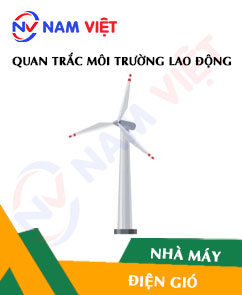
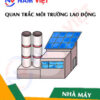
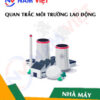

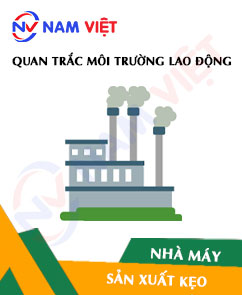
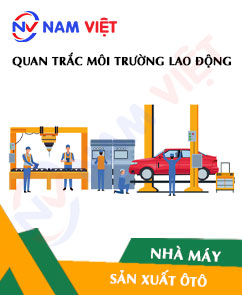

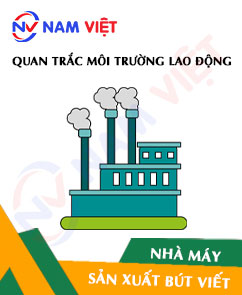



maituyet.cuong12
Good labor environment monitoring service!